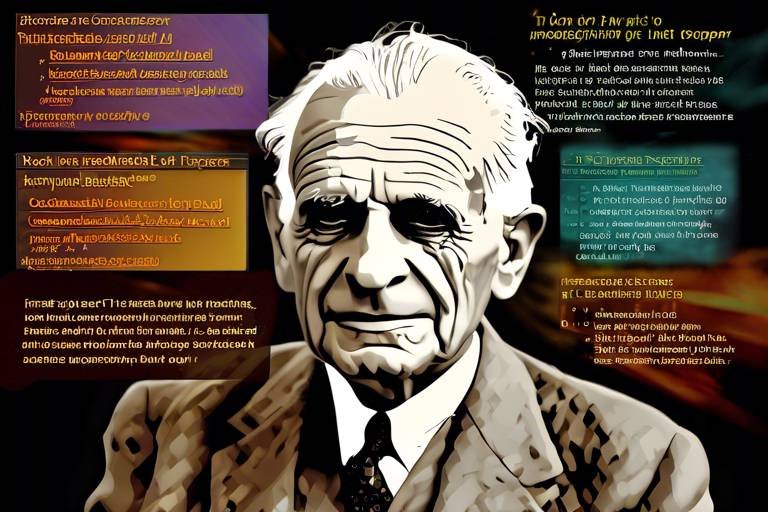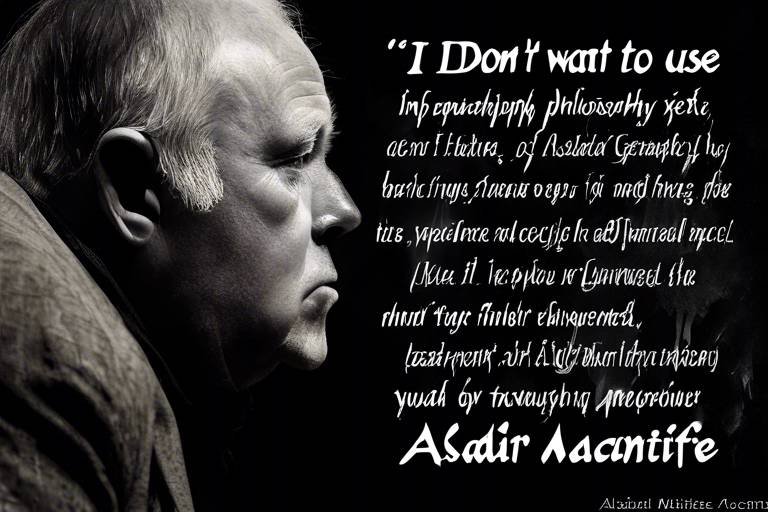Exploring Teresa of Avila's Mystical Philosophy
When we think about the depths of spiritual insight, few names resonate as profoundly as Teresa of Avila. This remarkable woman, born in 1515 in Spain, was not only a nun but also a mystic and reformer who transformed the landscape of Christian spirituality. Her writings and teachings offer a treasure trove of wisdom that continues to inspire spiritual seekers around the world. In this article, we will dive deep into her mystical philosophy, exploring the essence of her teachings and their implications for our spiritual growth.
Teresa's journey into the mystical realm was not just a personal quest; it was a response to the socio-religious environment of 16th-century Spain, a time marked by the Counter-Reformation and a renewed emphasis on personal piety. Her life experiences, including her struggles with health and her passionate commitment to reforming the Carmelite order, shaped her understanding of prayer and the soul's relationship with God. Teresa believed that through intimate connection with the divine, one could achieve profound spiritual transformation.
At the heart of Teresa's mystical philosophy lies the practice of prayer. She viewed prayer not merely as a ritual but as a vital lifeline that connects us to God. For Teresa, prayer is an act of love, a way of opening our hearts to the divine presence that surrounds us. She emphasized that prayer could take many forms, each serving a unique purpose in our spiritual journey. From vocal prayers to contemplative silence, Teresa's approach invites us to explore the various dimensions of communication with God.
In her writings, Teresa outlines a progressive journey through prayer, which she describes in stages. This journey is not just about seeking answers or tranquility; it's about moving towards a profound union with God. Each stage of prayer brings us closer to understanding our own souls and the divine love that envelops us. Through her insights, we can learn that the path to spiritual fulfillment is not linear but rather a dynamic interplay of experiences, emotions, and divine encounters.
As we delve deeper into Teresa's vision of the soul, we find that she saw the soul as a reflection of God's love. She believed that the soul's purpose is to seek union with the divine, a journey that is often fraught with challenges and revelations. Teresa's mystical experiences, which she candidly shared in her writings, reveal her understanding of the soul's transformative potential. By embracing our spiritual journeys, we can uncover the depths of our own souls and the divine spark within us.
In conclusion, Teresa of Avila's mystical philosophy offers a rich tapestry of insights that continue to resonate today. Her teachings on prayer, the nature of the soul, and the journey towards union with God provide a roadmap for anyone seeking deeper spiritual connections. As we explore her writings and reflect on her experiences, we are reminded that the quest for the divine is a deeply personal and transformative journey.
- Who was Teresa of Avila?
Teresa of Avila was a 16th-century Spanish nun, mystic, and reformer known for her influential writings on Christian spirituality and mysticism. - What is the main focus of Teresa's mystical philosophy?
Teresa's mystical philosophy centers around the practice of prayer and the soul's journey towards union with God. - How did Teresa's life experiences influence her teachings?
Her struggles with health, commitment to reform, and the socio-religious context of her time deeply shaped her understanding of spirituality and prayer. - What types of prayer did Teresa emphasize?
Teresa described various types of prayer, including vocal, mental, and contemplative prayer, each contributing to spiritual growth. - How can modern individuals apply Teresa's insights?
Contemporary individuals can incorporate Teresa's teachings into their spiritual practices to foster deeper connections with the divine.
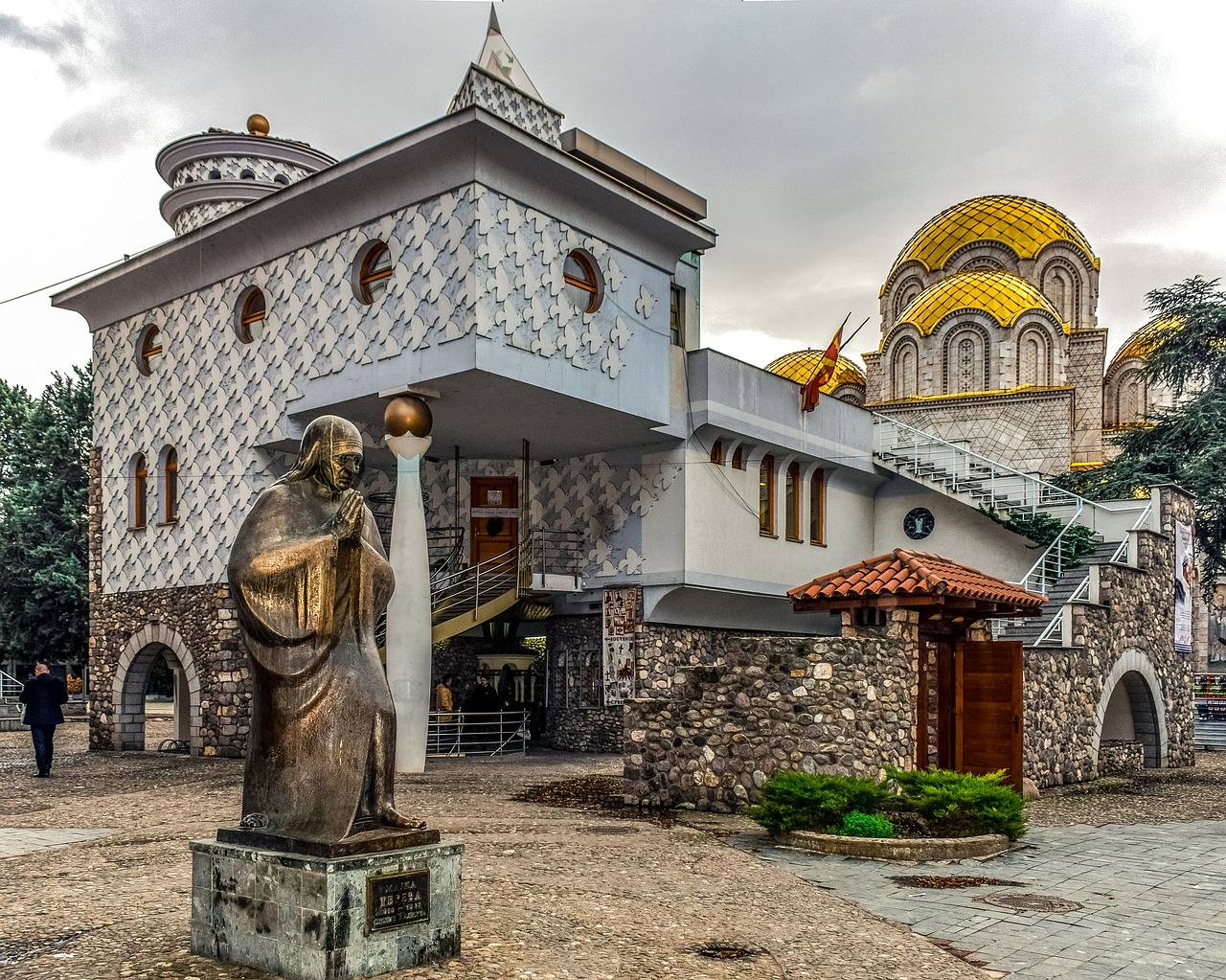
Life and Context of Teresa of Avila
Teresa of Avila, born on March 28, 1515, in Gotarrendura, Spain, emerged as one of the most influential figures in Christian mysticism. Her life unfolded during a time of significant socio-religious upheaval in 16th-century Spain, a period marked by the rise of the Reformation and the Catholic Counter-Reformation. This turbulent backdrop greatly influenced Teresa's spiritual journey and her eventual writings. Growing up in a devout family, she was exposed to the teachings of the Catholic Church from an early age, which laid the groundwork for her profound spiritual exploration.
In the midst of political and religious strife, Teresa entered the Carmelite order in 1535. However, her initial experiences within the convent were far from fulfilling. She faced numerous challenges, including health issues and a lack of genuine spiritual guidance. These struggles ignited a deep yearning for a more authentic relationship with God, pushing her to seek a path of true contemplation and prayer. Her determination to reform the Carmelite order led to the establishment of the Discalced Carmelites, emphasizing a return to a life of simplicity, prayer, and deep communion with God.
Teresa's writings reflect not only her personal experiences but also the broader spiritual climate of her time. The Catholic Church was grappling with internal corruption and a need for renewal, and her mystical insights provided a fresh perspective that resonated with many. Through her works, she offered a roadmap for spiritual growth, emphasizing the importance of interior prayer and the transformative power of direct communion with God. Her teachings challenged the existing norms and encouraged individuals to seek a personal relationship with the divine.
In her most famous work, The Interior Castle, Teresa uses the metaphor of a castle to illustrate the soul's journey toward God. Each room in the castle represents a different stage of spiritual development, highlighting the necessity of perseverance and dedication in one's spiritual practice. This imagery not only reflects her personal journey but also serves as a guide for others seeking to navigate their own spiritual landscapes.
Teresa's influence extended beyond her lifetime, shaping the landscape of Christian spirituality for centuries to come. Her emphasis on personal experience and direct encounter with God resonated deeply with a wide array of spiritual seekers. Today, her teachings continue to inspire individuals and communities, inviting them to embark on their own journeys of discovery and transformation.
The socio-religious context of her life played a crucial role in her development as a mystic. The interplay between personal struggles and the larger religious movements of her time created a fertile ground for her insights. As we explore Teresa's mystical philosophy, it's essential to understand how her life experiences and the environment around her shaped her profound teachings.
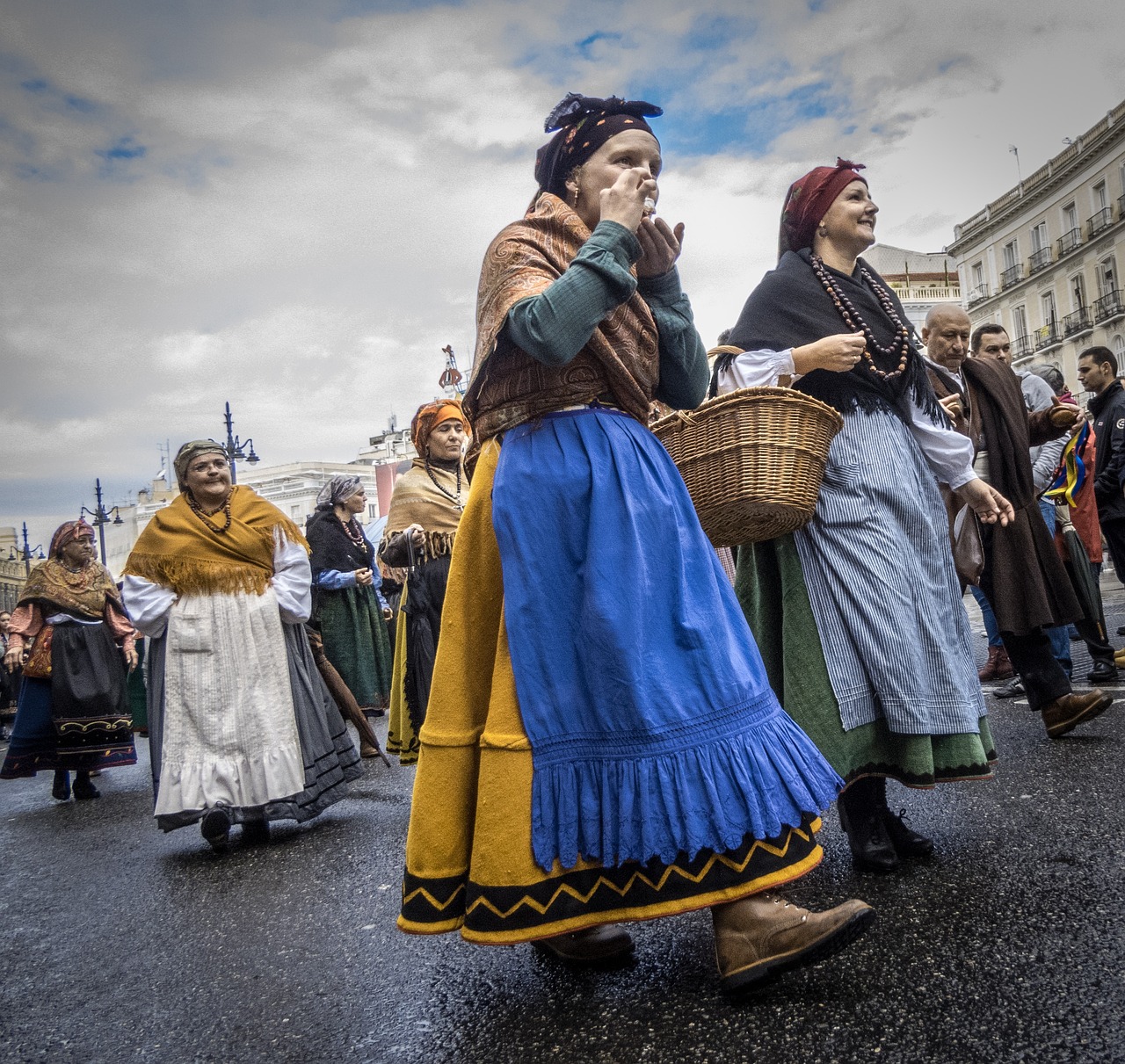
Key Concepts in Teresa's Mystical Philosophy
Teresa of Avila, a towering figure in Christian mysticism, offers a treasure trove of insights that resonate deeply with those seeking spiritual depth. Her teachings are not just theoretical musings; they are practical guides that illuminate the path to a closer relationship with God. At the heart of her mystical philosophy lies a few key concepts that serve as pillars for spiritual growth. These include the transformative power of prayer, the nature of the soul's journey, and the intimate relationship between the individual and the divine.
One of the most profound aspects of Teresa's philosophy is her understanding of prayer. To her, prayer is not merely a ritualistic practice but a dynamic conversation with God. It is through prayer that individuals can encounter the divine presence, experience transformation, and cultivate a deeper understanding of their own souls. Teresa categorizes prayer into different forms, each serving a unique purpose and facilitating various levels of intimacy with God. She emphasizes that prayer is a journey, evolving as the individual progresses in their spiritual life.
In Teresa's view, prayer is the lifeblood of the spiritual journey. It acts as a bridge connecting the soul to God, allowing for an exchange that is both personal and profound. She believed that through prayer, one could not only express their thoughts and feelings but also receive divine guidance and insight. The transformative power of prayer, according to Teresa, lies in its ability to change the individual from within. It is a process of inner purification and enlightenment that leads to a deeper union with God.
Teresa delineates three primary types of prayer, each with its unique characteristics and benefits:
- Vocal Prayer: This is the most basic form, involving spoken words and structured prayers. It serves as an introduction to the practice of prayer and is essential for beginners.
- Mental Prayer: This type encourages deeper reflection and contemplation. It involves meditating on scripture or spiritual themes, allowing the individual to engage their mind and heart.
- Contemplative Prayer: The highest form of prayer, where the individual seeks to be in God’s presence without the distraction of words. It is a silent communion with the divine.
Teresa outlines a progressive journey through the stages of prayer, illustrating how one can move closer to God. She describes these stages as a pathway toward union with the divine, where each step brings the individual closer to experiencing God's love and presence. The stages range from initial vocal prayers to the profound silence of contemplative prayer, each stage requiring dedication and openness to God's grace. This journey is not just about achieving a goal but about the transformation that occurs along the way.
As we delve deeper into Teresa's mystical philosophy, we uncover her rich understanding of the soul. She perceives the soul not merely as a vessel but as a dynamic entity on a quest for divine union. Her insights encourage individuals to explore their inner selves, fostering a sense of purpose and connection with God. Through her teachings, Teresa invites us to embark on our own spiritual journeys, reminding us that the road to God is one of continual growth and discovery.

The Role of Prayer in Teresa's Thought
When we dive into the rich tapestry of Teresa of Avila's mystical philosophy, one thread stands out prominently: the role of prayer. For Teresa, prayer was not merely a ritualistic practice but a dynamic and transformative journey toward union with God. Imagine prayer as a bridge, connecting the soul to the divine, allowing for a flow of grace and understanding that transcends the ordinary. It’s through this sacred communication that Teresa believed individuals could truly discover their purpose and the depths of their spiritual being.
Teresa categorized prayer into various forms, each serving a unique purpose in nurturing one's relationship with God. She emphasized that prayer should be approached with sincerity and an open heart, as it is the means by which the soul engages with the divine. This engagement is not just about speaking; it’s about listening and being receptive to the whispers of the Holy Spirit. In her writings, she often described prayer as a conversation with God, where both parties are actively involved. This perspective transforms the act of praying into a profound dialogue, rather than a one-sided monologue.
To illustrate her thoughts, Teresa outlined several types of prayer that are fundamental to her mystical approach:
- Vocal Prayer: This is the most basic form of prayer, involving spoken words, often found in traditional prayers or liturgies. It serves as a starting point for many believers.
- Mental Prayer: Here, the focus shifts inward. It involves meditation and reflection, where the individual contemplates God’s presence and seeks to deepen their understanding of divine truths.
- Contemplative Prayer: This is the pinnacle of Teresa's prayer journey. It is a silent, wordless communion with God, where the soul rests in divine love and presence.
Each type of prayer plays a crucial role in the spiritual journey, guiding the seeker through various stages of intimacy with God. Teresa believed that as one progresses through these forms, they would naturally move toward a deeper, more profound experience of God’s love. This journey is not always straightforward; it is filled with moments of struggle, doubt, and enlightenment. However, Teresa reassured her followers that persistence in prayer, regardless of the form, would ultimately lead to spiritual growth and transformation.
Another significant aspect of Teresa's understanding of prayer is the stages of prayer. She described this journey as a gradual ascent toward a more profound union with God, likening it to climbing a mountain. Each stage brings its own challenges and rewards, and Teresa encouraged her readers to embrace the process, recognizing that each step is valuable in nurturing the soul's relationship with the divine. Below is a simplified overview of these stages:
| Stage | Description |
|---|---|
| 1. Vocal Prayer | Engaging with God through spoken words and traditional prayers. |
| 2. Mental Prayer | Deepening understanding through meditation and reflection. |
| 3. Contemplative Prayer | Experiencing silent communion with God, resting in His love. |
In conclusion, the role of prayer in Teresa of Avila's thought is a profound journey of self-discovery and divine connection. It invites each individual to explore their relationship with God at various levels, ultimately leading to a transformative experience. Embracing prayer as a vital practice allows believers to cultivate a deeper intimacy with the divine, fostering spiritual growth that resonates through all aspects of life.
- What is the significance of prayer in Teresa of Avila's teachings?
Prayer is central to Teresa's mystical philosophy, serving as a vital means of connecting with God and fostering spiritual growth. - What types of prayer did Teresa of Avila emphasize?
Teresa highlighted vocal, mental, and contemplative prayer, each contributing uniquely to one's spiritual journey. - How does Teresa describe the stages of prayer?
She outlines a progressive journey, likening it to climbing a mountain, with each stage bringing the soul closer to union with God.

Types of Prayer: Vocal, Mental, and Contemplative
When we think about prayer, it often conjures up images of quiet reflection or fervent pleas to the heavens. However, Teresa of Avila provides a more nuanced understanding by categorizing prayer into three distinct types: vocal, mental, and contemplative. Each type serves a unique purpose on the spiritual journey, acting as a stepping stone towards a deeper connection with God.
Vocal prayer is perhaps the most accessible form of prayer. It involves using spoken words, often structured in the form of traditional prayers or spontaneous expressions of faith. Teresa believed that vocal prayer is essential, especially for beginners, as it helps to focus the mind and heart. Think of it as the warm-up before a workout; it prepares you for the more intense spiritual exercises to come. Vocal prayers can be communal, like those said during Mass, or private, said in the solitude of one’s room. This type of prayer can be likened to the initial conversations in a budding friendship—necessary for establishing a relationship.
Moving deeper, we encounter mental prayer, which Teresa describes as a more reflective and personal dialogue with God. This form of prayer invites individuals to meditate on scripture or spiritual themes, allowing thoughts and feelings to flow freely. It's akin to having a heart-to-heart conversation with a close friend, where you share your innermost thoughts and feelings. In mental prayer, the focus shifts from merely speaking to truly listening and contemplating the divine presence. Teresa emphasized that this type of prayer cultivates a deeper understanding of oneself and God, making it a vital part of spiritual growth.
Finally, we arrive at the pinnacle of Teresa's prayer types: contemplative prayer. This is where the mystical experience begins to unfold. Contemplative prayer transcends words, allowing the soul to rest in God's presence. It is a state of being rather than doing, where the individual experiences profound peace and union with the divine. Teresa described this as a love affair with God, where the soul is enveloped in divine love and grace. This type of prayer is not something that can be forced; it is a gift that comes with practice and patience, much like the gradual unfolding of a beautiful flower. In this state, the soul finds its true purpose and fulfillment.
To illustrate the differences among these types of prayer, consider the following table:
| Type of Prayer | Description | Purpose |
|---|---|---|
| Vocal Prayer | Spoken words, structured or spontaneous | Focuses the mind and heart, establishes relationship |
| Mental Prayer | Reflective dialogue, meditation on scripture | Deepens understanding of self and God |
| Contemplative Prayer | Resting in God's presence, transcends words | Achieves union with God, experiences divine love |
In summary, each type of prayer—vocal, mental, and contemplative—plays a crucial role in the spiritual life of an individual. They are not mutually exclusive but rather interwoven threads that contribute to a rich tapestry of faith. As we engage in these forms of prayer, we embark on a journey that leads us closer to understanding the divine and ourselves. So, which type resonates with you the most? Perhaps it's time to explore them all and see where your spiritual path leads!
- What is the difference between vocal and mental prayer? Vocal prayer involves spoken words, while mental prayer is more reflective and personal, focusing on meditation and internal dialogue.
- Can anyone practice contemplative prayer? Yes! While contemplative prayer may take time to develop, anyone can practice it with patience and openness to God's presence.
- How can I incorporate these types of prayer into my daily routine? Start with vocal prayers in the morning, dedicate time for mental prayer during the day, and set aside moments for contemplative prayer in the evening.

Stages of Prayer: A Journey Towards Union
In her profound exploration of the spiritual life, Teresa of Avila outlines a series of stages in prayer that serve as a roadmap for the soul's journey towards union with God. This journey is not merely a linear path but rather a dynamic process filled with various experiences and insights that deepen one's relationship with the divine. At the heart of Teresa's teachings is the idea that prayer is a transformative experience, one that evolves as the individual grows in faith and understanding.
Teresa describes these stages as a progression that leads the soul closer to God, highlighting that each stage has its unique characteristics and challenges. The first stage, often referred to as vocal prayer, involves the use of words and structured prayers. This is where many begin their spiritual journey, using prayers such as the Our Father or Hail Mary. Teresa emphasizes that while vocal prayer is essential for beginners, it should not be the end of one's practice; rather, it serves as a foundation for deeper forms of prayer.
As the soul matures, Teresa introduces the concept of mental prayer, which moves beyond mere recitation of words to a more contemplative engagement with God. In this stage, individuals reflect on the mysteries of faith, allowing their thoughts and feelings to be directed towards God. This form of prayer invites a personal dialogue with the divine, fostering a deeper connection and understanding of God's love and presence.
The pinnacle of Teresa's prayer stages is contemplative prayer, where the soul experiences a profound sense of union with God. In this stage, the individual often finds themselves in a state of silence and stillness, where words become unnecessary. Teresa describes this experience as a "loving gaze" upon God, where the soul simply rests in His presence. It is here that the transformative power of prayer truly manifests, leading to a deep sense of peace and fulfillment.
To illustrate these stages, consider the following table that summarizes Teresa's progression of prayer:
| Stage of Prayer | Description | Key Characteristics |
|---|---|---|
| Vocal Prayer | Structured prayers and recitations. | Use of words; foundational practice. |
| Mental Prayer | Reflective engagement with God. | Personal dialogue; contemplation of faith. |
| Contemplative Prayer | Profound union with God. | Silence; resting in God's presence. |
Teresa's stages of prayer are not just steps to be checked off; they represent a dynamic journey towards spiritual maturity. Each stage invites the practitioner to delve deeper into their relationship with God, encouraging them to embrace both the challenges and joys that come with spiritual growth. It's a reminder that prayer is not a one-size-fits-all experience but a deeply personal adventure that evolves over time.
As individuals navigate these stages, they may encounter moments of doubt, dryness, or distraction. Teresa acknowledges these struggles, emphasizing that they are a natural part of the spiritual journey. The key is to remain persistent and open to God's presence, trusting that each stage, no matter how difficult, is leading them closer to a profound union with Him.
- What is the significance of vocal prayer in Teresa's teachings?
Vocal prayer serves as the foundational stage for beginners, helping to establish a structured communication with God. - How does mental prayer differ from vocal prayer?
Mental prayer involves a deeper reflection and personal dialogue with God, moving beyond mere recitation of words. - What can one expect during contemplative prayer?
Contemplative prayer is characterized by silence and a profound sense of union with God, where the soul rests in His presence.

Teresa's Vision of the Soul
When we dive into the mystical philosophy of Teresa of Avila, we discover a profound understanding of the soul that resonates deeply with spiritual seekers. Teresa viewed the soul not merely as an entity but as a vibrant, living part of the divine tapestry. In her writings, she emphasized that the soul is inherently good, created in the image of God, and destined for an intimate relationship with the divine. This perspective invites us to explore our own souls with curiosity and reverence, recognizing their potential for growth and transformation.
One of Teresa's key insights is that the soul is on a journey—a journey towards union with God. She believed that this journey is marked by various stages, each offering unique opportunities for spiritual development. For Teresa, the soul's purpose is to seek God, and every experience, whether joyous or painful, serves as a stepping stone towards this ultimate goal. Imagine the soul as a traveler navigating through a vast landscape, where each hill and valley represents different experiences that shape its path.
In her famous work, The Interior Castle, Teresa uses the metaphor of a castle to describe the soul's structure. Each room within this castle symbolizes different stages of spiritual growth, leading towards the innermost chamber, where the soul encounters God directly. This imagery not only highlights the complexity of the soul but also the idea that there are layers to peel back, each revealing deeper truths about ourselves and our relationship with the divine.
Teresa also emphasized the importance of self-knowledge in this journey. She believed that understanding our own nature is crucial for recognizing our relationship with God. This involves a process of introspection and honesty, where we confront our weaknesses and strengths. By doing so, we can move closer to God, shedding the layers of ego and illusion that often cloud our perception. It's like polishing a gem; the more we refine our understanding of ourselves, the more our true essence shines through.
Moreover, Teresa described mystical experiences as significant milestones in the soul's journey. These experiences, often characterized by profound love, peace, and joy, serve as glimpses into the divine reality. She encouraged individuals to be open to these moments, as they can deepen one's faith and understanding of God's presence in their lives. However, Teresa also warned against becoming overly attached to these experiences, reminding us that the ultimate goal is a sustained relationship with God, rather than mere ecstatic moments.
In summary, Teresa of Avila's vision of the soul is a rich and intricate tapestry of ideas that invites us to embark on our own spiritual journeys. By embracing the soul's inherent goodness, understanding its purpose, and being open to transformative experiences, we can cultivate a deeper connection with the divine. As we navigate our own paths, let us remember Teresa's wisdom: the soul is not just a destination but a dynamic journey towards love and union with God.
- What is the main focus of Teresa of Avila's mystical philosophy?
Teresa's mystical philosophy primarily focuses on the relationship between the soul and God, emphasizing prayer, contemplation, and the transformative journey of the soul towards divine union. - How does Teresa describe the stages of spiritual growth?
In her works, particularly The Interior Castle, Teresa outlines various stages of spiritual growth, each represented by different rooms in a castle, leading to an intimate encounter with God. - What role does self-knowledge play in Teresa's vision of the soul?
Self-knowledge is crucial for Teresa as it allows individuals to confront their true selves, facilitating a deeper relationship with God and promoting spiritual growth. - What are mystical experiences according to Teresa?
Mystical experiences are profound moments of love, peace, and joy that offer glimpses into divine reality, serving as important milestones on the soul's journey.

Influence of Teresa's Writings
Teresa of Avila's writings have left an indelible mark on the landscape of Christian spirituality and mysticism. Her profound insights into the nature of prayer and the soul's relationship with God resonate deeply with those seeking a more intimate connection with the divine. Notably, her two most influential works, The Interior Castle and The Way of Perfection, serve as cornerstones for understanding her mystical philosophy.
The Interior Castle, often regarded as her magnum opus, presents a metaphorical journey through the soul, likening it to a castle with many rooms, each representing different stages of spiritual development. This work emphasizes the importance of self-examination and the transformative power of prayer, guiding readers through the intricate process of moving closer to God. In contrast, The Way of Perfection focuses on the practical aspects of prayer and the virtues necessary for a deeper spiritual life. Together, these texts not only provide a roadmap for personal spiritual growth but also invite readers to engage in a transformative dialogue with God.
In the context of 16th-century Spain, Teresa's writings emerged as a beacon of hope amidst a backdrop of religious turmoil and reform. Her emphasis on personal experience and direct communion with God challenged the rigid dogmas of the time, encouraging individuals to seek their own paths to spiritual fulfillment. This revolutionary approach has inspired countless spiritual seekers and theologians, leading to the establishment of the Discalced Carmelites, a reform movement she co-founded, which emphasized a return to a more contemplative and prayerful life.
Today, the relevance of Teresa's writings is more pronounced than ever. In a world filled with distractions and superficial engagements, her teachings remind us of the importance of cultivating a deep, personal relationship with God. Many modern spiritual communities draw upon her insights to foster practices that encourage mindfulness, prayer, and contemplation. For instance, retreats and workshops often incorporate her methods, providing participants with tools to navigate their spiritual journeys.
To better understand the impact of Teresa's writings, let’s examine some key themes that continue to resonate with contemporary audiences:
| Theme | Description | Modern Relevance |
|---|---|---|
| Prayer | Teresa emphasized the transformative power of prayer as a means of deepening one's relationship with God. | Encourages modern practices of mindfulness and meditation. |
| Self-Examination | Her writings advocate for introspection and understanding the self in the context of God's love. | Promotes personal growth and emotional well-being. |
| Mystical Union | Teresa describes the soul's journey toward union with God as a profound and personal experience. | Inspires individuals to seek deeper spiritual connections beyond traditional practices. |
In summary, Teresa of Avila's writings continue to influence and inspire spiritual seekers across generations. Her ability to articulate the complexities of the soul's journey and the various forms of prayer provides a rich foundation for anyone looking to deepen their spiritual life. As we navigate our own paths, her teachings serve as a reminder that the quest for union with God is both a personal and communal endeavor, one that invites us to explore the depths of our souls.
- What are the main themes of Teresa of Avila's writings?
Teresa's writings primarily focus on prayer, self-examination, and the mystical union of the soul with God. - How did Teresa of Avila influence Christian spirituality?
Her emphasis on personal experience and direct communion with God challenged the rigid religious structures of her time, paving the way for more contemplative practices. - What are some modern applications of Teresa's teachings?
Contemporary spiritual communities often incorporate her insights into their practices, emphasizing mindfulness, meditation, and deeper connections with the divine.

The Interior Castle
Born in 1515 in Gotarrendura, Spain, Teresa of Avila emerged as a pivotal figure in the realm of Christian mysticism. Growing up in a period marked by religious upheaval and the rise of the Reformation, her early life was steeped in the fervent spirituality of the Catholic Church. The socio-religious environment of 16th-century Spain, characterized by a blend of fervent devotion and rigid orthodoxy, played a significant role in shaping her spiritual journey. As she navigated through the constraints of her time, Teresa's writings began to reflect her deep yearning for a more personal connection with God, ultimately leading her to establish the Discalced Carmelites and reform monastic life.
At the heart of Teresa's mystical philosophy lie profound insights into the nature of prayer, contemplation, and the soul's relationship with God. She believed that the journey to divine union is not just a lofty ideal but a tangible reality accessible to all believers willing to embark on the path of spiritual growth. Through her writings, she emphasizes the importance of understanding the different dimensions of prayer and how they serve as gateways to a deeper communion with the divine.
For Teresa, prayer was not merely a ritualistic practice but a vital lifeline connecting the soul to God. She described prayer as a transformative experience that could lead to profound changes within the individual. Whether through vocal prayers, meditative contemplation, or silent communion, each form of prayer offered unique pathways for deepening one's relationship with God. Teresa's emphasis on the heart's disposition in prayer underscores the idea that the quality of our connection with the divine is far more important than the quantity of our prayers.
Teresa categorized prayer into three main types, each serving its purpose in the spiritual journey:
- Vocal Prayer: This involves structured prayers, such as the Our Father or Hail Mary, which help focus the mind and heart.
- Mental Prayer: A more contemplative approach, where one reflects on spiritual truths and engages in a dialogue with God.
- Contemplative Prayer: The highest form of prayer, where the soul rests in the presence of God, often described as a profound silence and stillness.
In her writings, Teresa outlines a progressive journey through prayer, illustrating how each stage leads the soul closer to divine union. She describes this journey as akin to climbing a mountain, where each step brings one closer to the summit of spiritual fulfillment. The stages include:
- Initial vocal prayers that establish the habit of prayer.
- Mental prayer that deepens understanding and relationship.
- Contemplative prayer, where one experiences profound peace and union with God.
Teresa's understanding of the soul is central to her mystical philosophy. She viewed the soul as a castle with many rooms, representing different stages of spiritual development. Each room signifies a deeper level of intimacy with God, and the journey through these rooms reflects the soul's quest for union with the divine. This metaphor not only illustrates the complexity of the spiritual journey but also emphasizes the idea that the soul is inherently good and destined for communion with God.
Teresa's works, particularly The Interior Castle and The Way of Perfection, have left an indelible mark on Christian spirituality. Her writings continue to resonate with spiritual seekers today, offering insights into the nature of prayer, the soul, and the transformative power of divine love. The impact of her teachings is evident in the numerous spiritual movements that draw inspiration from her life and philosophy.
Teresa's teachings have shaped the landscape of Christian mysticism, influencing countless spiritual seekers and theologians throughout history. Her emphasis on the personal experience of God and the importance of inner transformation has inspired generations to pursue a deeper relationship with the divine.
In today's fast-paced world, Teresa's insights are more relevant than ever. Contemporary individuals and spiritual communities can apply her teachings to cultivate deeper connections with the divine through prayer and contemplation. By embracing her philosophy, many find solace and guidance in their spiritual practices, fostering a sense of peace and fulfillment in their lives.
is one of Teresa's most significant works, where she intricately describes the soul's journey towards God as a journey through a castle with multiple rooms. Each room symbolizes a different stage of spiritual growth, inviting readers to explore the depths of their own souls. This metaphor serves as a powerful reminder that within each person lies a vast, unexplored realm filled with potential for divine encounter. As one progresses through the rooms, they encounter various challenges and graces, ultimately leading to the innermost chamber, where the soul experiences a profound union with God. Teresa's vivid imagery and profound insights invite us to embark on our own journey of self-discovery and spiritual awakening.
- What is the main theme of The Interior Castle? The main theme revolves around the soul's journey towards union with God, using the metaphor of a castle with different rooms representing stages of spiritual growth.
- How did Teresa of Avila influence Christian mysticism? Teresa's emphasis on personal experience and inner transformation has profoundly influenced Christian mysticism, inspiring countless seekers to pursue a deeper relationship with God.
- What types of prayer did Teresa advocate? Teresa advocated for vocal, mental, and contemplative prayer, each serving unique purposes in the spiritual journey.

and
This article delves into the profound insights of Teresa of Avila, a prominent figure in Christian mysticism, examining her teachings, experiences, and their implications for spiritual growth and understanding.
Teresa of Avila was born on March 28, 1515, in Gotarrendura, Spain. Growing up in a deeply religious family, she was influenced by the socio-religious climate of 16th-century Spain, a period marked by the Catholic Reformation and the rise of mysticism. This environment shaped her spiritual journey, leading her to become a nun, reformer, and mystic. Her struggles with health and her passionate quest for a deeper relationship with God fueled her writings, making her one of the most significant figures in Christian spirituality.
Central to Teresa's mystical philosophy are the ideas of prayer, contemplation, and the nature of the soul's relationship with God. She believed that through prayer, individuals could cultivate a profound connection with the divine, leading to personal transformation and spiritual awakening. Her teachings emphasize that the journey towards God is not just a solitary path but a deeply relational experience, rooted in love and surrender.
For Teresa, prayer was not merely a ritualistic practice; it was a vital force that could transform the heart and soul. She viewed prayer as a conversation with God, a way to open oneself to divine love and guidance. In her writings, she encourages believers to engage in various forms of prayer, each serving as a stepping stone towards a deeper relationship with the divine. The transformative power of prayer, in her view, is what leads the soul to experience God's presence in profound ways.
Teresa identified three primary types of prayer that play distinct roles in spiritual development:
- Vocal Prayer: This is the spoken or recited prayer, often using established prayers like the Our Father or Hail Mary. It's a way to express devotion and is accessible to all.
- Mental Prayer: This form involves meditation and reflection, allowing the individual to contemplate God’s word and presence more deeply.
- Contemplative Prayer: The highest form of prayer, where the soul rests in God’s presence, often described as a deep, silent communion with the divine.
Each type of prayer serves a unique purpose, guiding individuals toward a more intimate relationship with God and facilitating spiritual growth.
Teresa outlines a series of stages in prayer, illustrating a progressive journey towards union with God. These stages are:
- Beginning Prayer: Focused on vocal and mental prayers, this stage is foundational.
- Prayer of Quiet: A deeper state of mental prayer where distractions fade away.
- Prayer of Union: A transformative experience where the soul feels a profound connection with God.
- Spiritual Marriage: The ultimate union with God, characterized by complete surrender and love.
This journey emphasizes that spiritual growth is a gradual process, requiring patience and dedication.
Teresa had a unique understanding of the soul, viewing it as a dynamic entity on a quest for union with God. She believed that the soul's purpose is to seek God and experience divine love. Her mystical experiences led her to articulate that the soul is like a castle with many rooms, each representing different stages of spiritual growth. This metaphor illustrates the soul's potential to explore deeper realms of intimacy with God, ultimately leading to a transformative union.
Teresa's works, particularly The Interior Castle and The Way of Perfection, have left an indelible mark on Christian spirituality. Her writings not only provide insight into her mystical experiences but also serve as a guide for countless individuals seeking a deeper connection with God. Today, her teachings continue to resonate, offering valuable lessons for spiritual seekers across various denominations.
Teresa's teachings have profoundly shaped the landscape of Christian mysticism. Her emphasis on personal experience and the transformative power of prayer has influenced countless spiritual seekers and theologians throughout history. She is often regarded as a patroness of those seeking a deeper understanding of the mystical life.
In today's fast-paced world, Teresa's insights remain incredibly relevant. Many contemporary individuals and spiritual communities are rediscovering her teachings, applying them to their spiritual practices. By incorporating her methods of prayer and contemplation, people can foster deeper connections with the divine, enhancing their spiritual journeys.
- What is the main focus of Teresa of Avila's teachings?
Teresa's teachings primarily focus on the importance of prayer and contemplation as means to achieve a deeper union with God. - How can I apply Teresa's philosophy in my daily life?
You can start by incorporating different forms of prayer into your routine, such as vocal, mental, and contemplative prayers, to deepen your spiritual practice. - What are the stages of prayer according to Teresa?
Teresa outlines several stages of prayer, including beginning prayer, prayer of quiet, prayer of union, and spiritual marriage, each representing a deeper connection with God.
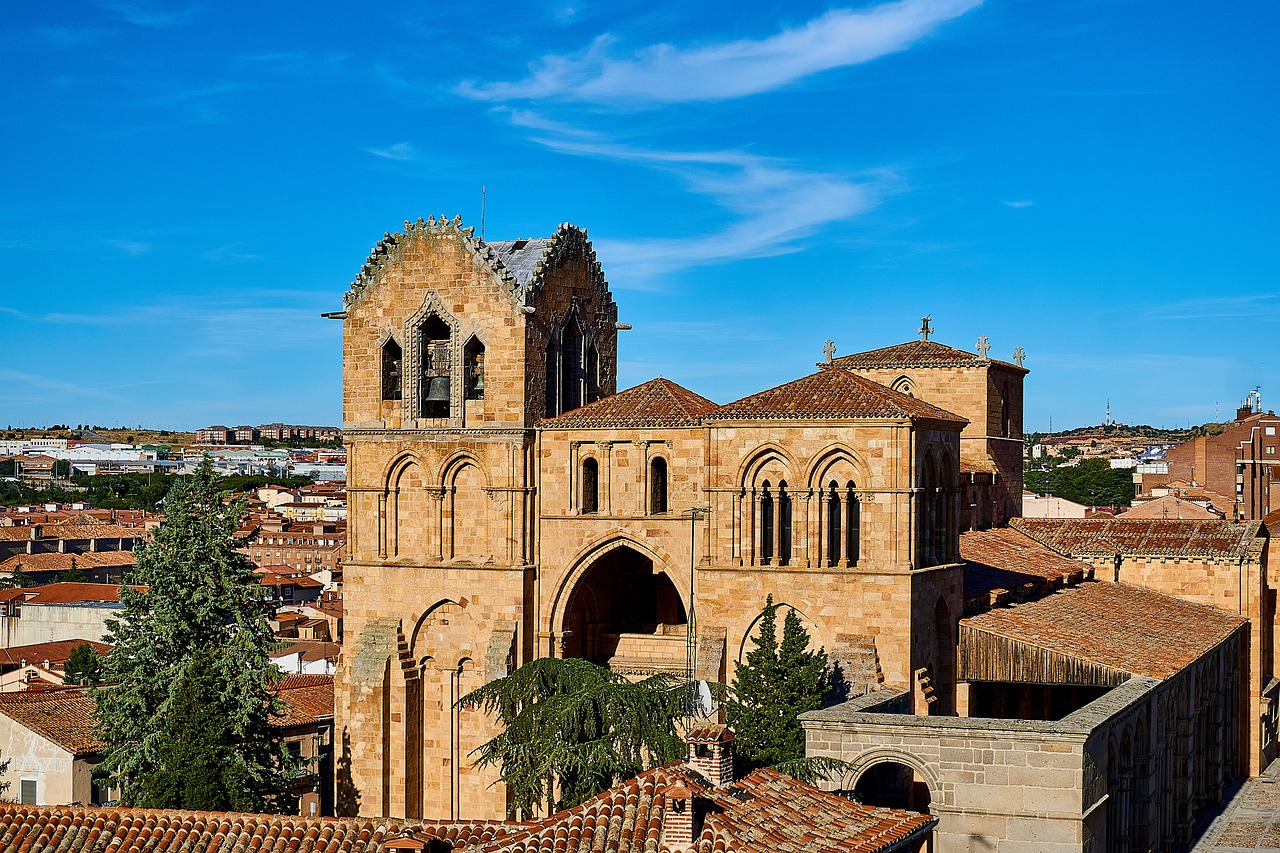
The Way of Perfection,
The Way of Perfection is one of Teresa of Avila's most significant works, serving as a spiritual guide that offers profound insights into the path of Christian perfection. Written in a time when the Church was undergoing immense transformation, Teresa's teachings provide a roadmap for individuals seeking a deeper relationship with God. She emphasizes that the journey towards perfection is not merely about external practices but involves an internal transformation of the soul. This work is both a reflection of her personal mystical experiences and a practical manual for those desiring to cultivate a life of prayer and devotion.
In this text, Teresa discusses the importance of self-knowledge and humility as foundational virtues on the path to spiritual growth. She believes that understanding oneself is crucial for recognizing one’s dependence on God. Teresa writes, "The first step in the way of perfection is to know oneself." This self-awareness allows individuals to confront their weaknesses and strengths, ultimately leading to a more authentic relationship with the divine.
Moreover, Teresa outlines the significance of community and support from fellow believers. She asserts that while the journey is deeply personal, the encouragement and guidance from a spiritual community can enhance one’s growth. In her view, the fellowship of believers acts as a mirror, reflecting both the beauty and the flaws of one’s spiritual journey. This communal aspect is vital, as it fosters accountability and shared wisdom among individuals striving for perfection.
Teresa also delves into the power of prayer, which she regards as the heart of the spiritual life. Her teachings highlight that prayer is not just about reciting words; it’s about fostering a deep, intimate connection with God. She categorizes prayer into three main types: vocal prayer, mental prayer, and contemplative prayer, each serving distinct purposes in enhancing one’s spiritual practice. In her own words, “Prayer is an act of love.” This love, she argues, is what drives the soul closer to God.
Teresa illustrates the different forms of prayer as follows:
- Vocal Prayer: This form involves the use of spoken words, allowing individuals to express their thoughts and desires to God.
- Mental Prayer: A more reflective practice, mental prayer encourages contemplation and meditation on God’s presence.
- Contemplative Prayer: This is the deepest form of prayer, where one seeks to rest in God's presence, often leading to profound mystical experiences.
Each type of prayer plays a vital role in the spiritual journey, acting as stepping stones towards a greater union with God. Teresa emphasizes that the effectiveness of prayer lies not in the quantity of words but in the quality of the heart’s intention.
In addition to prayer, Teresa discusses the stages of spiritual growth, illustrating that the journey towards perfection is progressive. She describes these stages as a series of transformations that lead the soul closer to God, culminating in a profound union. This journey is not without its challenges; Teresa acknowledges the struggles and distractions that often arise, yet she insists that perseverance is key. Her encouragement to remain steadfast in prayer and practice resonates deeply with anyone on a spiritual path.
Ultimately, The Way of Perfection is more than just a guide; it’s a heartfelt invitation to enter into a relationship with God that transforms the soul. Teresa's insights continue to inspire countless individuals today, urging them to embark on their own journeys of spiritual growth and deeper connection with the divine.
- What is the main focus of The Way of Perfection?
The book emphasizes the importance of prayer, self-knowledge, and community in the journey towards Christian perfection. - How does Teresa define prayer?
Teresa views prayer as an act of love that fosters a deep connection with God, encompassing vocal, mental, and contemplative forms. - Can modern individuals apply Teresa's teachings?
Yes, her insights can be adapted to contemporary spiritual practices, helping individuals cultivate a deeper relationship with the divine.
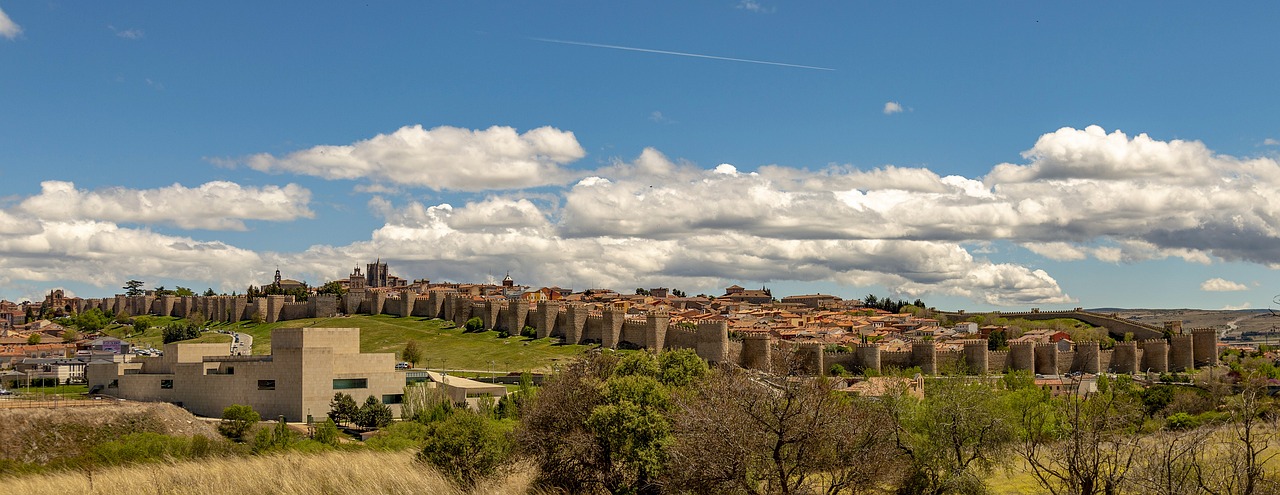
on Christian spirituality and mysticism, as well as their relevance today.
Teresa of Avila's writings, particularly The Interior Castle and The Way of Perfection, have left an indelible mark on Christian spirituality and mysticism. These texts are not merely historical artifacts; they are vibrant, living documents that continue to inspire and guide spiritual seekers today. By offering profound insights into the nature of prayer, the soul, and the relationship with God, Teresa's works invite readers to embark on their own spiritual journeys. Her teachings encourage individuals to explore the depths of their spirituality, fostering a connection with the divine that transcends mere ritualistic practices.
One of the most compelling aspects of Teresa's writings is their accessibility. Unlike many theological texts that can feel dense and esoteric, Teresa's language is straightforward and engaging. She speaks from her own experiences, sharing her struggles and triumphs in a way that resonates with many. This personal touch makes her works relatable and applicable to contemporary life. In a world where many seek meaning and connection, Teresa's insights provide a roadmap for navigating the complexities of faith.
Moreover, Teresa's emphasis on the transformative power of prayer is particularly relevant in today's fast-paced society. Many individuals find themselves overwhelmed by daily stresses and distractions, and Teresa's teachings remind us of the importance of carving out time for contemplation and connection with God. Her descriptions of various types of prayer—vocal, mental, and contemplative—offer practical guidance for those looking to deepen their spiritual practices. Each form serves a unique purpose, allowing individuals to engage with the divine in diverse ways.
In addition, Teresa outlines a progressive journey of prayer that mirrors personal growth and spiritual development. This notion of stages in prayer not only emphasizes the evolving nature of one's relationship with God but also provides a framework for understanding spiritual maturity. As individuals move through these stages, they may find themselves experiencing profound moments of union with the divine, which can be both exhilarating and humbling. This journey is as relevant today as it was in the 16th century, reminding us that spiritual growth is a lifelong endeavor.
Teresa's vision of the soul also contributes significantly to her influence on Christian mysticism. She viewed the soul as a dynamic entity, capable of profound transformation through its relationship with God. This perspective encourages individuals to see their spiritual journeys as deeply personal and transformative, fostering a sense of hope and purpose. In a time when many grapple with existential questions, Teresa's insights provide a reassuring reminder of the soul's innate desire for connection with the divine.
Ultimately, the relevance of Teresa's writings in contemporary spirituality cannot be overstated. As more people seek authentic spiritual experiences, her teachings offer a rich tapestry of wisdom that can guide them. Whether one is a seasoned practitioner or a curious newcomer, Teresa's insights into prayer, the soul, and the divine relationship resonate deeply, encouraging a return to the heart of spirituality.
- What is the main theme of Teresa of Avila's writings?
Teresa's writings primarily focus on the nature of prayer, the journey of the soul towards God, and the transformative power of spiritual practices.
- How can I apply Teresa's teachings to my spiritual life?
You can apply her teachings by incorporating various forms of prayer into your daily routine, reflecting on the stages of prayer, and seeking a deeper relationship with the divine.
- Why are Teresa's writings still relevant today?
Her writings remain relevant due to their accessibility, practical guidance, and profound insights into the human experience of seeking God amidst the complexities of modern life.
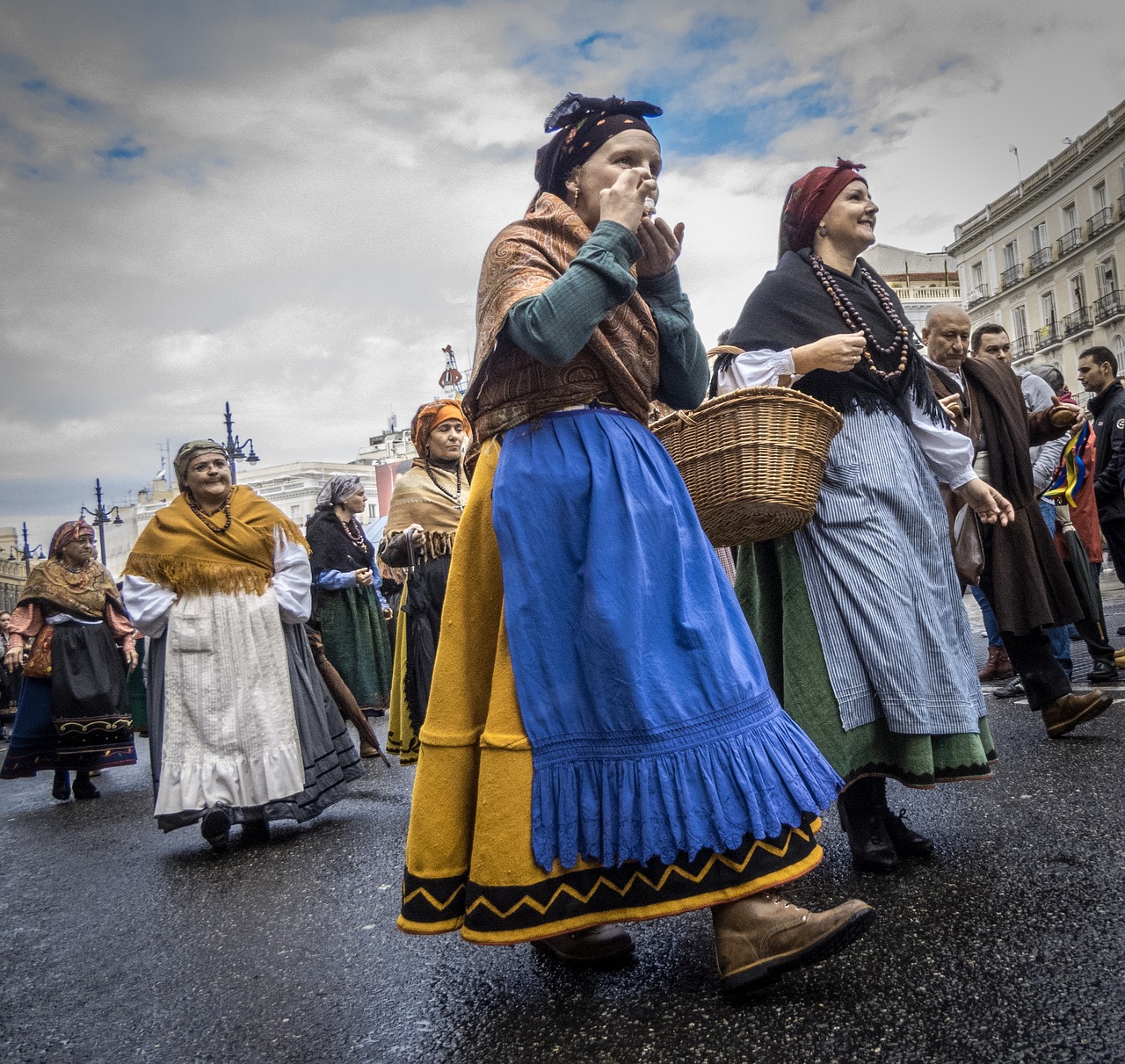
Legacy in Christian Mysticism
Teresa of Avila's legacy in Christian mysticism is nothing short of profound. Her teachings continue to resonate with spiritual seekers and theologians alike, offering a roadmap for those who wish to deepen their relationship with God. Born in 1515, Teresa lived during a time of significant religious upheaval, yet her insights have transcended the ages, providing a rich tapestry of spiritual wisdom that remains relevant today. She didn't just write about mysticism; she embodied it, making her experiences accessible to others seeking the divine.
One of the most significant aspects of Teresa's legacy is her emphasis on the interior life. She believed that true spirituality begins within, urging individuals to cultivate a personal relationship with God through prayer and contemplation. Her seminal works, such as The Interior Castle and The Way of Perfection, serve as guides for navigating the complexities of the soul's journey towards union with the divine. These texts have been instrumental in shaping the mystical tradition within Christianity, influencing countless spiritual practices and theological discussions.
Teresa's concept of the soul as a castle, with various chambers representing different stages of spiritual growth, invites readers to explore their own inner landscapes. This metaphor not only illustrates the journey towards God but also highlights the importance of self-examination and introspection. As she wrote, "The soul is like a castle made of diamond or very clear crystal, in which there are many rooms, just as in Heaven." This imagery has inspired generations to reflect on their spiritual paths and the transformative power of prayer.
Moreover, Teresa's influence extends beyond the confines of her own time and place. Her thoughts on mental prayer and contemplation have laid the groundwork for modern contemplative practices. Many contemporary spiritual communities draw upon her insights, integrating her teachings into their rituals and daily lives. For instance, the practice of centering prayer, which emphasizes silence and stillness, echoes Teresa's call for deep, personal engagement with God.
The impact of Teresa's writings can also be seen in the formation of religious orders, particularly the Discalced Carmelites, which she co-founded. This order not only adhered to her mystical principles but also spread her teachings across Europe and beyond. The Carmelite tradition, with its focus on contemplation and community, continues to thrive, attracting those who seek a deeper understanding of their faith.
In the broader context of Christian mysticism, Teresa's legacy is marked by her ability to bridge the gap between the mystical and the practical. She taught that mysticism is not reserved for a select few but is accessible to anyone willing to engage in a sincere relationship with God. This democratization of spirituality is perhaps one of her most enduring contributions, inviting all believers to embark on their own mystical journeys.
In conclusion, Teresa of Avila's legacy in Christian mysticism is a testament to her profound understanding of the human soul's quest for God. Her teachings continue to inspire and challenge us, reminding us that the path to the divine is not only possible but also deeply enriching. As we delve into her works and embrace her insights, we find ourselves equipped to navigate our own spiritual journeys with greater clarity and purpose.
- What is Teresa of Avila known for? Teresa of Avila is known for her profound contributions to Christian mysticism, particularly her writings on prayer and the soul's journey towards union with God.
- How did Teresa influence modern spirituality? Her teachings on mental prayer and contemplation have significantly shaped contemporary spiritual practices, encouraging individuals to cultivate a deeper relationship with the divine.
- What are some key works of Teresa of Avila? Her most notable works include The Interior Castle and The Way of Perfection, which explore the mystical journey and the nature of the soul.
- What is the significance of the Discalced Carmelites? Founded by Teresa, the Discalced Carmelites emphasize contemplation and community, continuing her legacy and teachings in today's spiritual landscape.
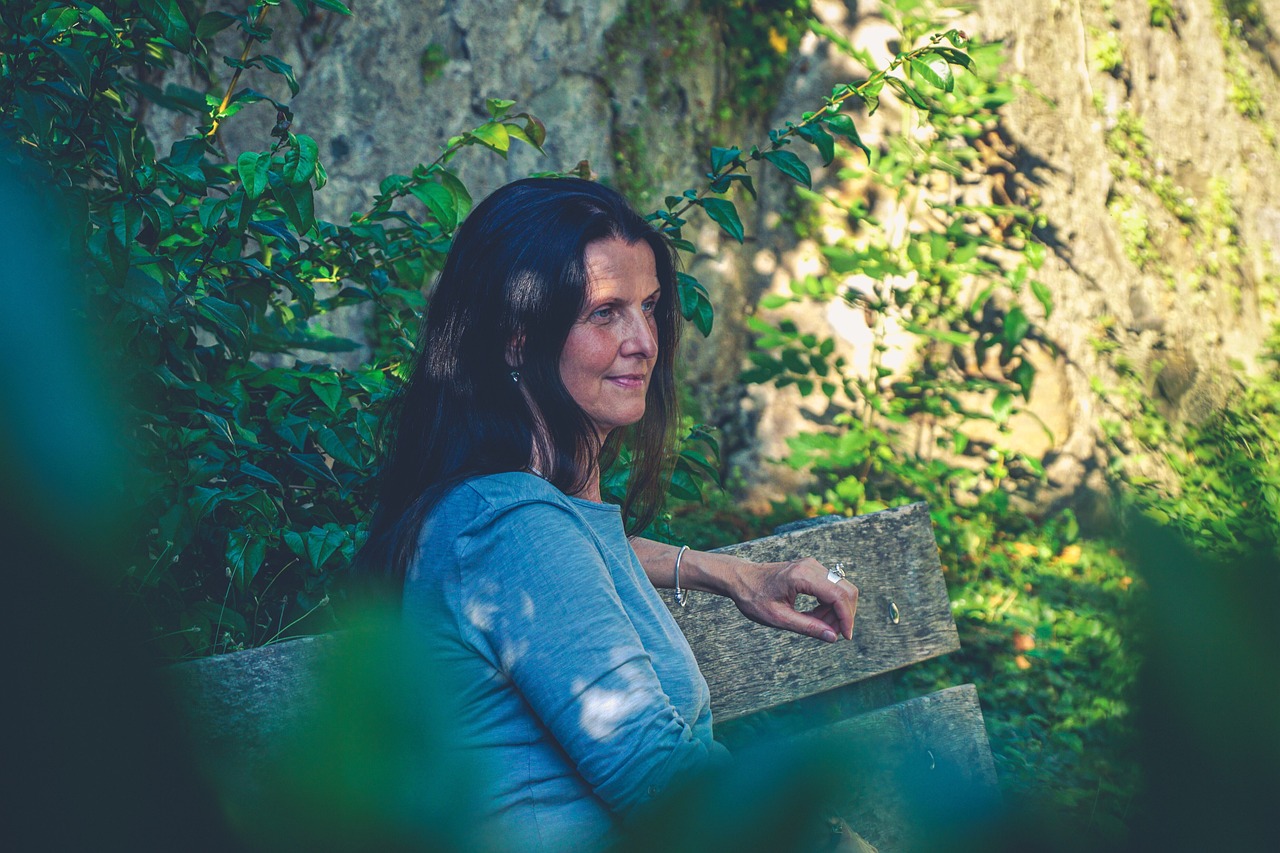
Modern Applications of Teresa's Philosophy
In today’s fast-paced world, where distractions lurk around every corner, the teachings of Teresa of Avila offer a refreshing perspective on spirituality and personal growth. Her profound insights, rooted in the 16th century, resonate with modern seekers who yearn for a deeper connection with the divine. So, how can we apply her mystical philosophy in our contemporary lives? Let's explore!
One of the most significant applications of Teresa's philosophy is the emphasis on prayer as a transformative practice. In our busy lives, we often forget to pause and reflect. Teresa’s teachings remind us that prayer is not just a ritual; it's a lifeline to the divine. By incorporating different forms of prayer—vocal, mental, and contemplative—into our daily routines, we can cultivate a more intimate relationship with God. Imagine starting your day with a few moments of silent contemplation, allowing your mind to settle and your spirit to connect with the divine presence. This simple act can set a positive tone for the rest of your day.
Moreover, Teresa’s concept of the stages of prayer can guide us in our spiritual journeys. Just as she described a progression towards union with God, we too can recognize our personal growth in stages. For instance, you might begin with vocal prayers, gradually moving towards deeper forms of meditation. This journey is not just about reaching a destination; it’s about embracing the process and allowing it to transform you. Each stage offers unique insights and experiences that can enrich your spiritual life.
In addition to personal prayer practices, Teresa’s writings encourage us to embrace community. In her time, she founded the Discalced Carmelites, emphasizing the importance of communal support in spiritual growth. Today, spiritual communities—whether online or in-person—can foster an environment where individuals share their experiences, insights, and struggles. Engaging in group prayer or discussions about spiritual topics can deepen our understanding and provide encouragement on our journeys.
Furthermore, Teresa’s philosophy highlights the significance of self-reflection. In our quest for spiritual growth, taking the time to examine our thoughts, feelings, and actions is crucial. By journaling or engaging in guided reflections, we can uncover the layers of our souls and understand our relationship with God on a deeper level. Teresa’s idea of the soul’s journey towards God can serve as a powerful metaphor for our own lives, reminding us that we are all on a unique path, filled with challenges and triumphs.
Lastly, Teresa’s legacy encourages us to embrace the mystical experience as a vital aspect of spirituality. In a world that often prioritizes rationality and logic, her teachings invite us to explore the mysterious and the unknown. This could mean being open to moments of divine inspiration, seeking experiences that transcend the ordinary, or simply being present to the beauty of creation. By cultivating an attitude of wonder and curiosity, we can experience the divine in our everyday lives.
In conclusion, the modern applications of Teresa of Avila’s philosophy are not just relevant; they are essential for anyone seeking a deeper connection with the divine. By integrating her teachings into our lives—through prayer, community, self-reflection, and embracing the mystical—we can embark on a transformative journey that enriches our spiritual existence. So why not take a moment today to reflect on how you can incorporate Teresa's wisdom into your own life? You might be surprised by the profound impact it can have!
- What is the main focus of Teresa of Avila's teachings?
Teresa's teachings primarily focus on the importance of prayer, the nature of the soul's relationship with God, and the transformative power of mystical experiences. - How can I start incorporating Teresa's philosophy into my daily life?
You can begin by establishing a regular prayer practice, engaging in self-reflection, and seeking community support from like-minded individuals. - What types of prayer does Teresa advocate for?
Teresa describes various types of prayer, including vocal, mental, and contemplative prayer, each serving a unique purpose in deepening one’s relationship with God. - Why is self-reflection important in Teresa's philosophy?
Self-reflection allows individuals to examine their thoughts and actions, fostering personal growth and a deeper understanding of their spiritual journey. - Can Teresa's insights be applied to modern spiritual practices?
Absolutely! Her insights are timeless and can be adapted to fit contemporary spiritual practices, helping individuals cultivate a deeper connection with the divine.
Frequently Asked Questions
- Who was Teresa of Avila?
Teresa of Avila was a 16th-century Spanish mystic, nun, and reformer of the Carmelite Order. She is renowned for her profound spiritual insights and writings, which have significantly influenced Christian mysticism and spirituality.
- What are the key concepts in Teresa's mystical philosophy?
Teresa's mystical philosophy revolves around several key concepts, including the importance of prayer, the nature of the soul, and the journey towards union with God. She emphasizes that prayer is not just a ritual but a transformative experience that deepens one's relationship with the divine.
- What types of prayer did Teresa advocate?
Teresa described various types of prayer, including vocal prayer, mental prayer, and contemplative prayer. Each serves a unique purpose: vocal prayer engages the mind and body, mental prayer fosters reflection and personal connection, while contemplative prayer leads to a deeper understanding of God.
- What are the stages of prayer according to Teresa?
Teresa outlines several stages of prayer, which she views as a journey towards union with God. These stages range from initial vocal prayers to advanced contemplative experiences, illustrating a progression that deepens one's spiritual connection over time.
- How did Teresa view the soul?
Teresa believed that the soul is inherently designed for communion with God. She viewed the soul's journey as one of seeking union with the divine through mystical experiences, emphasizing its purpose in achieving spiritual fulfillment.
- What impact did Teresa's writings have on Christian spirituality?
Teresa's writings, particularly 'The Interior Castle' and 'The Way of Perfection,' have had a profound impact on Christian spirituality by providing insights into the mystical life. Her teachings continue to inspire spiritual seekers and theologians, shaping the landscape of Christian mysticism.
- How can modern individuals apply Teresa's philosophy?
Contemporary individuals can apply Teresa's insights by incorporating her practices of prayer and contemplation into their spiritual routines. By fostering a deeper connection with the divine, they can enhance their spiritual journeys and cultivate a more profound sense of inner peace.



